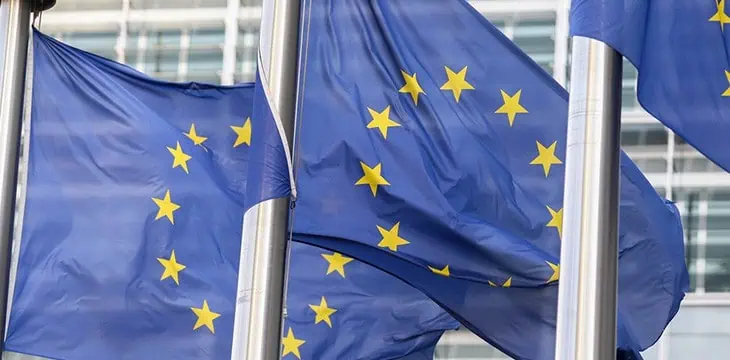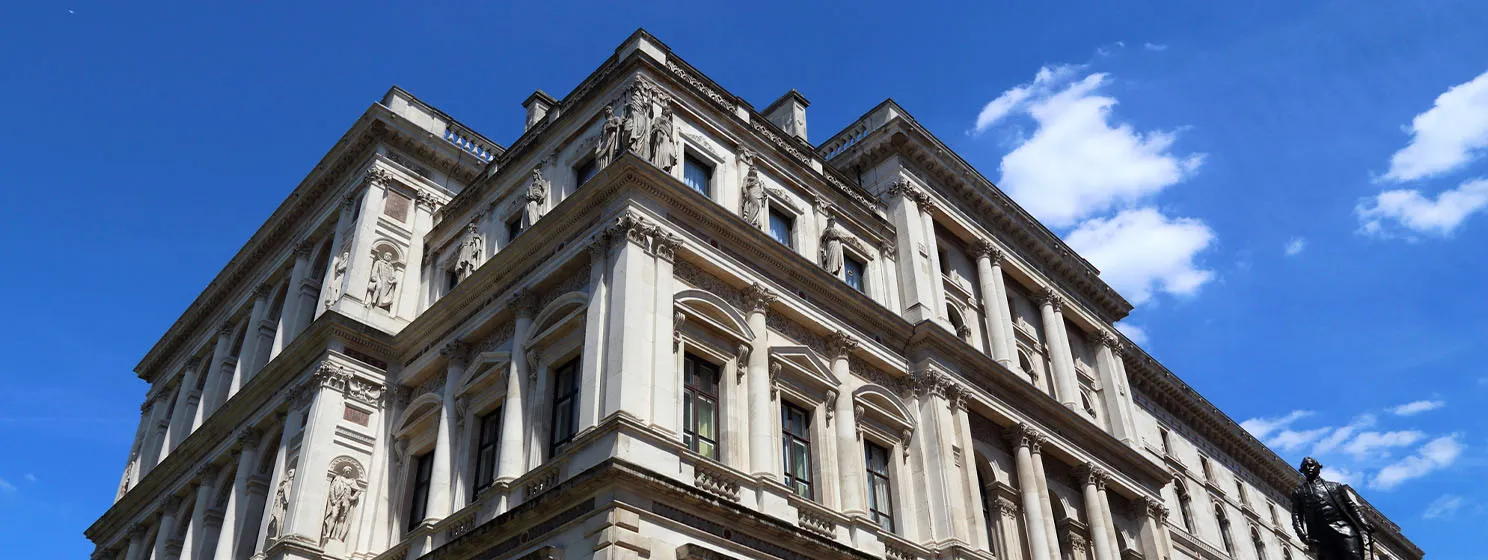Circle has secured the first stablecoin license under the European Union’s new regulatory regime, while rival Tether continues to avoid discussions about whether its stable will ever join this Euro party.
On July 1, Circle announced that it had become the first global stablecoin issuer to achieve compliance with the EU’s Markets in Crypto Assets (MiCA) regulatory framework. MiCA’s full suite of regulations for digital asset service providers won’t take effect until the end of 2024, but certain provisions regarding stablecoin usage took effect on June 30.
Circle was issued an Electronic Money Institution (EMI) license from France’s banking regulator, the Autorité de Contrôle Prudentiel et de Résolution (ACPR). MiCA requires digital asset operators to obtain a license in one European Economic Area (EEA) member state, and Circle chose France as its European base of operations in March 2023.
The MiCA stamp of approval allows Circle to issue both USDC and EURC (formerly Euro Coin) across the EEA via its French ‘passport.’ Circle is also opening its Circle Mint option for EU business customers looking to mint and redeem USDC and EURC.
Circle CEO Jeremy Allaire said his company’s “adherence to MiCA, which represents one of the most comprehensive crypto regulatory regimes in the world, is a huge milestone in bringing digital currency into mainstream scale and acceptance.”
MiCA classifies stablecoins as either e-money tokens (EMT) or asset-referenced tokens (ART). EMTs are payment-focused assets that maintain a fixed reference to an official fiat currency. ARTs are pegged to either a mix of currencies, real-world commodities such as gold, or other digital assets. ARTs are generally not used for everyday payments, such as coffee or Uber fares, but are considered a ‘means of exchange.’
EMTs can only be issued by holders of EMI permits like the one Circle just received. Circle has been furiously promoting USDC’s new identity as a ‘payment stablecoin,’ hoping to also benefit from U.S. legislation that would elevate USDC while keeping Tether on the outs.
But while EMTs based on the Euro or other EEA fiat currency (like Sweden’s krona) don’t face caps on usage under MiCA, foreign currency EMTs—including dollar-denominated USDT and USDC—have to cease further issuance of a token if its daily usage exceeds (a) 1 million daily transactions or (b) €200 million ($215 million) in total value.
Those limits apply “within a single currency area” (aka within the EU) but don’t appear to include typical ‘crypto’ transactions where one token is swapped for another, used in derivative contracts, transferred peer-to-peer via non-custodial wallets, etc. Despite the length of time MiCA has been in the oven, there remains some confusion regarding its specifics, and might require some real-time refereeing for clarity to emerge.
Significant doubt
MiCA requires EMT/ART issuers to hold at least 30% of their funds as deposits in ‘credit institutions’ aka banks (which don’t pay the kind of interest you currently get from U.S. Treasury bills). But there are even tougher rules for stables that MiCA flags as ‘significant’ or having ‘systematic importance’ based on a number of criteria.
Among said criteria are having a market cap over €5 billion ($5.4 billion), more than 10 million users, more than 2.5 million daily transactions, and over €500 million ($539 million) in daily transaction volume. There are also more esoteric benchmarks such as “the interconnectedness of the tokens or its issuers with the financial system,” and “the significance of the activities of the issuer of the tokens on an international scale.”
Stables meeting three of these ‘significant’ criteria are required to keep at least 60% of their fiat reserves spread across multiple credit institutions to avoid a single point of failure should any bank go under.
It’s unclear how Circle plans to abide by these rules. Circle keeps a significant chunk of its reserve assets in T-bills, with its May 30 independent accountants’ report showing nearly $10.4 billion in T-bills, $18.7 billion in U.S. Treasury repurchase agreements, plus another $4.1 billion in cash supporting the roughly $33 billion in issued USDC.
Of that cash, Circle kept ~$3.1 billion at regulated financial institutions, hopefully not all in the same account at the same bank. In March 2023, the abrupt failure of Silicon Valley Bank (SVB) left Circle temporarily lacking access to $3.3 billion in cash reserves. The public acknowledgment of this hiccup caused USDC to lose its 1:1 peg with the dollar, briefly slumping below 88¢. An even worse crisis was averted only after the Federal Deposit Insurance Corporation announced it would guarantee all SVB deposits.
Tether on the outs
MiCA’s banking requirements have been strongly criticized by Tether due to the company’s well-publicized problems establishing relationships with mainstream financial institutions.
Tether has over $112 billion worth of circulating USDT, and while it claims to have most of its fiat reserves in T-bills allegedly custodied by Wall Street’s Cantor Fitzgerald (NASDAQ: ZCFITX), its most recent reserves ‘attestation’ showed less than $100 million in cash and another $17.6 billion in a hodgepodge of BTC tokens, precious metals, and ill-defined ‘other investments.
Tether CEO Paolo Ardoino has expressed pessimism regarding his company’s ability to continue operating in Europe under MiCA’s “very restrictive measures.” Ardoino complained that it was “very difficult” to secure relationships with one bank, so multiple banks appear out of the question.
Another aspect of MiCA’s stablecoin rules that Tether finds distasteful is the requirement for ‘significant’ issuers to submit detailed info on their reserve assets. Tether has been promising to conduct an independent full-scale audit of its reserves for seven years now, but that magical moment never seems to arrive.
Tether’s aversion to transparency comes at a cost. On June 26, the Bitstamp exchange announced that it would delist EURT, Tether’s Euro-denominated stablecoin, as of June 30. Bitstamp clarified that EMTs that “are not Euro-denominated and are already available on the exchange but not within MiCA regulation, will not be delisted, although their availability to European customers will be limited on certain products.”
Other exchanges have taken more drastic measures, including the OKX exchange, which delisted USDT in March. The U.S.-based Uphold delisted USDT (and five smaller stables) last month. Around the same time, Bloomberg reported the Kraken exchange was preparing to give USDT the boot, but Kraken denied the report, albeit with the qualifier that the exchange “will of course follow all legal requirements, even those we disagree with.”
Binance, the world’s largest exchange by trading volume, announced last month that it would “restrict the availability of Unauthorized Stablecoins for EEA users across its product offerings” as of June 30.
Binance’s Tether diss was followed on July 1 by Binance CEO Richard Teng, celebrating Circle’s MiCA-compliant status as “a positive step forward for the crypto ecosystem in the EEA region.” Teng made sure to emphasize that USDC “will continue to be available within Binance product offerings for our EEA users.”
Binance issued a blog post offering various ways for customers in the EEA to continue using USDC on its exchange. The post added that “there will not be any forced conversions” of non-compliant stables, but their use will be limited to spot trades and sales (no more purchases).
Beg the peg
USDT has been trading slightly below its $1.00 peg for over a week now, and while the margin isn’t all that significant, the fact that it’s taking far longer than usual to rebound has led to some interesting theories as to what’s going on behind closed doors.
One theory holds that MiCA is to blame, as exchanges, market-makers, and the like “may be reducing their [USDT] positions” due to Tether’s imminent exit from EU markets, thereby “impacting the peg across the ecosystem.” As for why other market-makers aren’t plugging this hole, Tether’s inability to process sizable redemptions could be causing these other actors to “wait for redemptions to complete before making further purchase[s].”
The X/Twitter personality known as @OccamiCrypto echoed this theme, suggesting Tether’s depeg was due to the fact that it “doesn’t have the sufficient banking connectivity to process fiat in any size. Tether’s entire fiat connectivity is Cantor, which isn’t a bank.”
OccamiCrypto noted that “BVNK and Britannia are Tether’s day to day banks.” These institutions are “tiny ($200-$300mm total balance sheet) that rely on US correspondents. Neither could process the billions that Tether might need.”
OccamiCrypto theorized that “Tether has relied on crossing mints (incoming fiat) with redemption requests… But since crypto prices and stablecoin market cap have gone sideways… Tether hasn’t had the fiat inflows that could once use to match/fund redemptions… Tether could easily sop up the excess supply with their reserve assets but they can’t seem to get them from TBills and Cantor into cash and through their tiny banks in the size they need. It’s the only explanation for these depegs that have become quite frequent.”
Next step: Paolo on milk cartons
Meanwhile, Consumers’ Research—the group behind the controversial TetheredToCorruption campaign—shows no sign of letting up. One sharp-eyed pedestrian recently spotted a mobile billboard that appeared to depict a victim of human trafficking alongside giant text reading ‘Human traffickers use Tether.’ Consumers’ Research previously disclosed that its campaign would include mobile billboards in select cities, including New York and Washington, DC.
On June 25, Fox Business reporter Eleanor Terrett tweeted photos of TetheredToCorruption door hangers dangling from the Congressional office door handles of Rep. Chip Roy (R-TX) and Sen. Debbie Stabenow (D-MI). Other images showed flyers claiming Tether is a “massive fraud risk,” that it’s “plagued by investigations,” and is the “go-to crypto for bad actors.” The headline took issue with Tether’s “terrorist financing, and a close relationship with China.”
However, Tether appears to be pushing back, as Consumers’ Research executive director Will Hild tweeted on June 26 that YouTube was now age-restricting its Tether video. But neither Ardoino nor Tether’s only other public figure (general counsel Stuart Hoegner) has publicly referenced TetheredToCorruption since June 20.
You know, if Tether doesn’t yet have a mascot, we think an ostrich might be a good candidate.
Watch: Teranode is the future of the Bitcoin network

 05-05-2025
05-05-2025 





